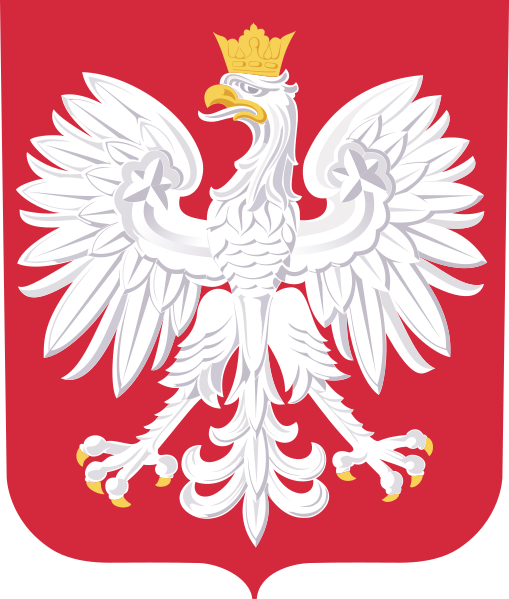Online first
Current issue
Archive
Most cited 2025
About the Journal
Editorial Board
Editorial Office
Copyright and self-archiving policy
Information clause on the processing of personal data
Conflict of interest and informed consent
Declaration of accessibility
Instructions for Authors
Instructions for Reviewers
Contact
Reviewers
2024
2023
2022
2021
2020
2019
2018
2017
2015
2016
2014
2013
Editing and translations
ORIGINAL PAPER
Poisoning deaths in Poland: Types and frequencies reported in Łódź,
Kraków, Sosnowiec, Gdańsk, Wrocław and Poznań during 2009–2013
1
Nofer Institute of Occupational Medicine, Łódź, Poland
(Department of Toxicology, Toxicology Unit)
2
Nofer Institute of Occupational Medicine, Łódź, Poland
(Department of Toxicology, Poison Information Centre)
3
Nofer Institute of Occupational Medicine, Łódź, Poland
(Department of Radiological Protection)
4
Jagiellonian University Medical College, Kraków, Poland
(Department of Clinical Toxicology)
5
Jagiellonian University Medical College, Kraków, Poland
(Poison Information Centre)
6
Institute of Occupational Medicine and Environmental Health, Sosnowiec, Poland
(Regional Poisons Control Centre)
7
T. Marciniak Lower Silesian Specialized Hospital – Emergency Medicine Centre, Wrocław, Poland
8
Pomeranian Center of Toxicology, Gdańsk, Poland
9
Medical University of Gdańsk, Gdańsk, Poland
(Department of Clinical Toxicology)
10
University of Medical Sciences, Poznań, Poland
(Department of Emergency Medicine)
11
Raszeja Hospital in Poznań, Poznań, Poland
(Department of Toxicology)
Online publication date: 2017-08-22
Corresponding author
Anna Krakowiak
Nofer Institute of Occupational Medicine, Department of Toxicology, św. Teresy 8, 91-348 Łódź, Poland
Nofer Institute of Occupational Medicine, Department of Toxicology, św. Teresy 8, 91-348 Łódź, Poland
Int J Occup Med Environ Health. 2017;30(6):897-908
KEYWORDS
TOPICS
ABSTRACT
Objectives: The aim of this study has been to assess the characteristics of acute poisoning deaths in Poland over a period
of time 2009–2013. Material and Methods: The analysis was based on the data obtained from the patient records stored
in toxicology departments in 6 cities – Łódź, Kraków, Sosnowiec, Gdańsk, Wrocław and Poznań. Toxicological analyses
were routinely performed in blood and/or urine. Major toxic substances were classified to one of the following categories:
pharmaceuticals, alcohol group poisonings (ethanol and other alcohols), gases, solvents, drugs of abuse, pesticides, metals,
mushrooms, others. Cases were analyzed according to the following criteria: year, age and gender of analyzed patients, toxic
substance category and type of poisoning. The recorded fatal poisonings were classified according to the International Classification
of Diseases. Results: The record of 261 deaths were retrospectively reviewed. There were 187 males (71.64%)
and 74 females (28.36%) and the male to female ratio was 2.52. Alcohol group poisonings were more frequently responsible
for deaths in men compared to all poisonings, 91.1% vs. 71.6%, respectively (p < 0.05), and pharmaceutical agents were
more frequently responsible for deaths in women, 47.4% vs. 28.4%, (p < 0.05). Methanol was the most common agent in
the alcohol group poisonings, accounting for 43.75% (N = 49), followed by ethylene glycol, 39.29% (N = 44), and ethanol,
16.96% (N = 19). Conclusions: Epidemiological profile data from investigation of poisoning deaths in Poland may be very
useful for the development of preventive programs. Int J Occup Med Environ Health 2017;30(6):897–908
Share
RELATED ARTICLE
We process personal data collected when visiting the website. The function of obtaining information about users and their behavior is carried out by voluntarily entered information in forms and saving cookies in end devices. Data, including cookies, are used to provide services, improve the user experience and to analyze the traffic in accordance with the Privacy policy. Data are also collected and processed by Google Analytics tool (more).
You can change cookies settings in your browser. Restricted use of cookies in the browser configuration may affect some functionalities of the website.
You can change cookies settings in your browser. Restricted use of cookies in the browser configuration may affect some functionalities of the website.




